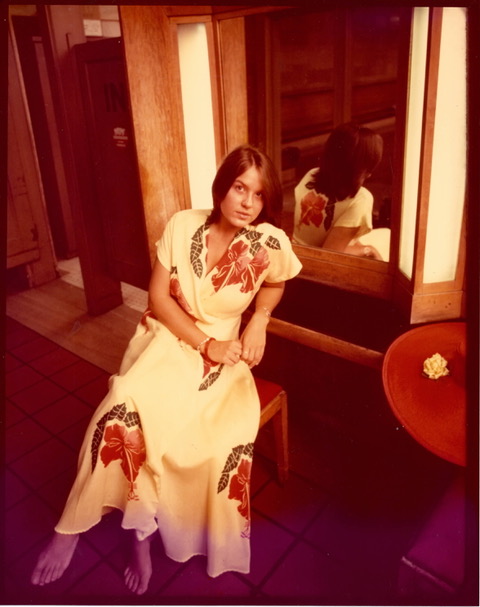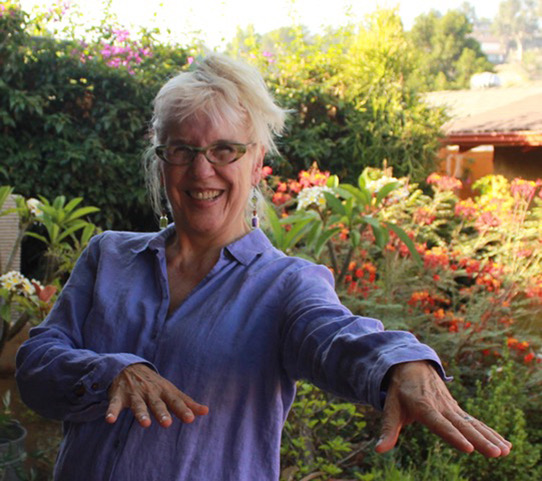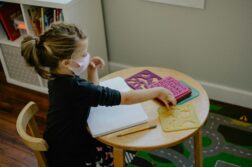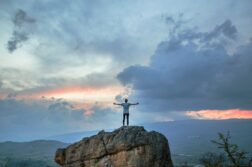It’s been said that a thing does not exist until you have a name for it. When I was growing up in Detroit in the ’60s, no one I knew was talking about lesbians.
It was a different time. No one was out in a public way. There were no lesbians on TV, no Ellen, no Melissa. I must have heard slurs about effeminate men, but no one talked about gender nonconforming women.
Although I had decided at age five not to marry or have children, the only word available to me was “spinster,” which might have come from Little Women by Louisa May Alcott, one of my favorite books. I especially loved Jo, the tomboy who was also a writer. Had the novel been written in the late 20th century, she might well have been a lesbian.

Young people look for role models to see who they can be. One of mine was my grade school gym teacher, Miss McLean, who was almost certainly a lesbian, though I only realized it decades later. I had no word for her. I had no idea.
But when I was eleven my grandparents accidentally took me to see The Group, a film adaptation of Mary McCarthy’s novel, which follows eight women friends who graduated from Vassar College in 1933. When they gather for a funeral, it is revealed that the woman played by Candice Bergen has become a lesbian. A lesbian! There was a word, and it gave way to an intriguing idea. I purchased a paperback copy of The Group and read it for clues.
I didn’t encounter the word again until high school. I was studying performing arts and happened upon No Exit, by Jean-Paul Sartre. In this three-character play, a man and two women are confined to Hell, an eternal waiting room. There’s a vain woman, who is attracted to the man, and a lesbian, Inez, forthright and cruel, who’s attracted to her. I insisted on playing Inez.
Not long after, a classmate started a gay and lesbian liberation group. He encouraged me to join, insisting, “You’re a lesbian.” I demurred. My images of lesbians, all two of them, were butch. I admired lesbians. They were super cool, a model of the independence I sought. But as a girly girl, I just didn’t feel I qualified. (I didn’t have the word for that either.)
In high school, I did find the feminist movement, primarily through the first issue of Ms. magazine. Looking back, I noticed an article about women loving women, but I don’t recall focusing in on it. I do remember the voices that protested sexism, and the way links were made between how women were treated by their fathers, husbands and brothers and how we were treated at work and by the law. I realized I had always been a feminist, and now I had a word for that too.
In my second year of college, I moved to Toronto and immersed myself in the feminist community. With women’s studies courses at the university and a women’s bookstore in town, I was suddenly connected to an international network of books, publications, music, and films that were talking about women’s issues. I read Rubyfruit Jungle, lesbian and feminist author Rita Mae Brown’s groundbreaking autobiographical novel about being a lesbian.
I befriended actual lesbians and discovered they’re just like anyone else! Kind of like me! None of them wore platform shoes and glam-rock outfits, but other than that they were kind of like me!
I got involved with a feminist theatre group and begged to play the character who says, “I am a lesbian and I am proud.”
I had only just discovered for myself that I was a lesbian; nobody warned me not to fall in love with Lynn, my straight best friend. I did and suffered the predictable consequences. Why won’t she just try? What’s wrong with me? On a visit home, I announced to my mother that I had become a lesbian, but because I had no girlfriend to verify that, she ignored me.
None of the lesbians I met in Toronto was eager to help a needy, neurotic femme newbie have her first experience of lesbian sex—go figure! I was still a lesbian virgin when I left. Back in Detroit, I didn’t know how to find the lesbian community, and I didn’t know who to ask.
In the summer of 1975, I drove my ’67 Tempest to Vermont to attend the Sagaris Institute, a five-week feminist gathering that was part think-tank, part political organizing bootcamp, part summer camp. It drew 120 women from across North America and the bulk of them were lesbians. Movement stars— Rita Mae Brown, Mary Daly, Charlotte Bunch—were on faculty and the schedule was jammed with classes and lectures and political in-fighting. At 20 I was among the youngest there.
On the first day my roommate confronted me: “Are you a dyke?” Confusing dyke with butch I said, yes, I’m a lesbian, but I’m not a dyke. She imbued this with class implications that I was unaware of and ignored me from then on.
One weekend during the institute, I overheard that a group was driving to Boston for the gay pride march. They didn’t really have room for me but let me curl under the hatchback for the three-hour drive. It was worth it. The march was festive and exhilarating, and that night we converged on The Saints—my first gay bar. We cheered the arrival of Elaine Noble, the first out candidate elected to a state legislature. And Rita Mae Brown complimented my dancing!
But back at Sagaris, I still could not get laid. I had opportunities, but no experience in lesbian courtship, and I was too freaked out to admit that I had no idea what to do. So I left as I had arrived, lesbian virginity intact. Was it possible I was going to fail at being a lesbian?
That fall I enrolled in the Women, World and Wonder program at an experimental college in Western Michigan. It turned out that Grand Rapids, birthplace of Gerald R. Ford, had a thriving lesbian population, and I started to meet women in the community.
I fell hard for Debra, a smart woman with the personality of Eeyore from Winnie the Pooh. I invited her for coffee, but she stood me up, and I went home intending to get as drunk and stoned as I could, only to find we were out of alcohol and pot. That evening, she called me and casually asked how I was doing.
“I’m trying to get drunk, but there’s nothing in the house.”
“Why do you want to get drunk?” she asked.
Evasively, I answered, “Because of a woman.”
“Oh,” she said. “Is it me?”
“Of course not,” I told her. She agreed to pick me up for a liquor run. I don’t remember her choice; I bought white rum.
She took me to Lookout Hill. We walked down the slope and sat in the weeds, drinking and talking. Suddenly we were startled by headlights, and two cops started toward us, catching us in their flashlights.
I think they were equally startled that we were two women. They asked if we were all right, and Debra said, “We’re just talking,” which was true. We’d kicked our bottles away.
We were white, they were paternalistic, and they told us to go home where it was safe.
Debra drove us to her place and invited me in. The inexperienced femme, I had to be the initiator, but we were both drunk enough to make it work, sort of. And by morning I had a deeper understanding of the word I had wanted so much to claim: lesbian.

Terry Wolverton is the author of 11 books of fiction, creative nonfiction and poetry, including Embers, a novel in poems and Insurgent Muse: Life and Art at the Woman’s Building, a memoir. Her most recent poetry collection is Ruin Porn. terrywolverton.net






Discussion2 Comments
Loved this story!
Love love love anything that springs from the mind and heart of Terry Wolverton— stirring poet, mentor, quiet leader, and generous facilitator of others’ discoveries of their own gifts as creators. This movingly transparent memoir piece shares the universal yearning for love and belonging that we all reach for, and for me, brings us all home to the heart.